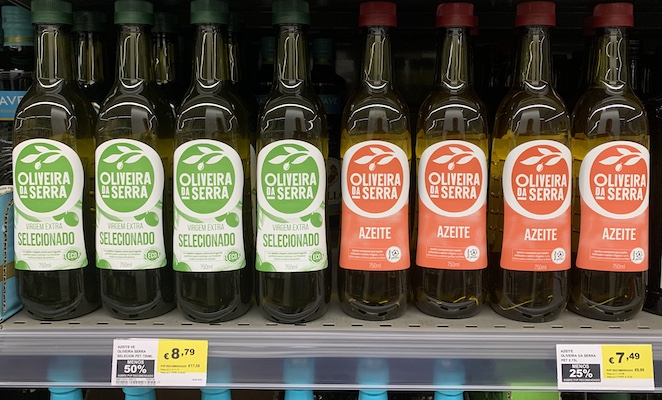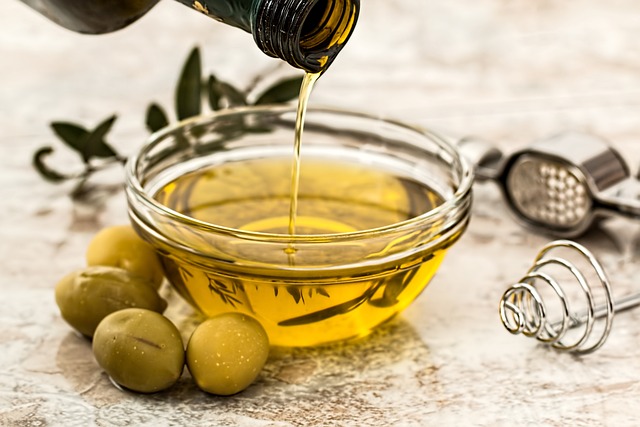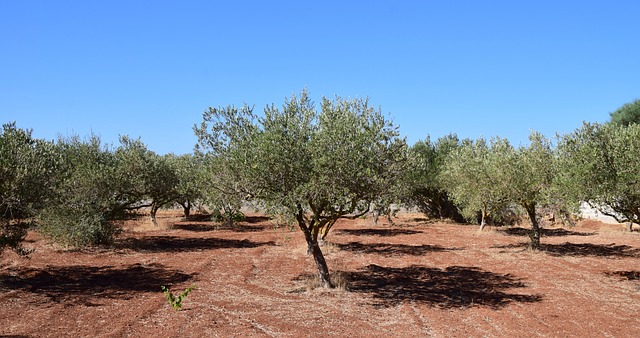This is a different kind of story
We like to tell good stories here. Maybe I should say we like to tell interesting stories in an engaging way. And we hope that, when we do that well, you will get to the end and feel good about having spent a few minutes reading it.
Today’s story has a beginning and a middle, but no neat ending. You’ll see what I mean when we get to that part.
Here’s the beginning
Some of us will remember the “Energy Crisis” in the 1970’s. During those years, a series of international events caused an interruption in the global supply of oil. Suddenly gasoline was in short supply, and in some places simply not available. In the United States we saw long lines at gas stations and higher prices.
This was a wake up call. It illustrated, in ways almost anyone could understand, how events in one part of the world could impact the lives and pocket books of people in other areas. It forced many people, and their governments, to rethink some old assumptions and adopt new habits.
There is a different kind of oil shortage occurring today that has some of the same characteristics. It’s happening on a much smaller scale and isn’t disrupting daily lives to the same degree. In fact, depending on where you live, you might not have even noticed it. But it illustrates how our world is changing in ways that will impact all of us in the future.
We have a global shortage of olive oil.
How much has the price of olive oil increased?
We had noticed the price of olive oil rising over the last year, but hadn’t thought much about it until a recent headline brought it into focus:
Olive oil inflation in Portugal reaches 69%
The brief news story that followed summed it up well.
The price of olive oil in Portugal was, in January, up 69% on the same month in 2023, recording the highest year-on-year increase for olive oil in the European Union, where prices on average were up 50%, according to data released by Eurostat today. Olive oil prices ‘soared’ in the second half of 2023,largely due to climate change. Prices in Greece, Spain and Estonia were all up over 50%, with countries like Romania, Ireland and the Netherlands registering increases much lower (12.7%, 15.9% and 17.6% respectively).
<Citation>
We hadn’t done the math, but we had noticed the price increases. I looked back at some past grocery receipts and did my own calculation. We usually buy store brand olive oil in 750ml bottles.
In June, 2023, a bottle cost €3.95 (roughly $4.32 at that time).
Earlier this week – in March, 2024 – we saw similar products on the shelf for €7.49 (approximately $8.14). And that was the “on sale” price!
That’s about an 89% increase.

My examples may not be an exact “olives to olives” comparison, but in the words of a finance guy I used to work with, “It may not be precise, but it’s directionally correct.”
Maybe it’s a European thing
For folks living in the US, this may not seem like a big deal. So what? There are entire supermarket aisles lined with dozens of varieties of cooking oil – corn oil, vegetable oil, canola oil, and so on. But in Europe, this is a big deal. Olive oil is an integral part of the cuisines in many southern European countries. It is, as one chef put it, “part of who I am and as a chef, it is the basis of everything I do”.
Besides being an ingredient for cooking, olive oil is also a garnish and a dressing for salads. As Americans raised on Thousand Island and Hidden Valley Ranch, we’ve had to acquire a taste for the simple oil and vinegar approach to our greens. (And BTW, it’s been a great lesson to learn!)
Anything that impacts the olive oil industry will be felt directly in southern Europe and the Mediterranean region. The warm weather and dry climate provide ideal conditions for olive trees.
Spain is the largest producer, making nearly half of all the olive oil consumed around the world. The Spanish province of Jaén, in the southeast region of Andalusia, is sometimes called the “World Capital of Olive Oil”. Within the province there are over 66 million olive trees – the largest man-made forest on earth.
Italy is number two and Portugal is number three. Other major producers in the region include Greece (#4), Tunisia (#5), Turkey (#6), and Morocco (#7). One Portuguese company, SOVENA, has the largest olive growing investment in the world – 10,000 hectares (almost 25,000 acres).
Here’s the middle part
So why are prices going up?
The answer is simple economics – supply and demand. The supply of olive oil has decreased and demand has increased. And the major contributing factors are outside the control of the olive growing industry.
The supply side problem
The supply shortage has been caused by climate change. Simply put, the olive groves in Europe are burning up from extreme heat and dying of thirst because of extended droughts.
2023 was the hottest year on record and the UN Environment Programme reports that the Mediterranean region is warming about 20 percent faster than the global average. The air temperature there is already 1.5 degrees Celsius higher than in the pre-industrial era. (That’s the threshold established in the Paris Agreement of 2015 as the target upper limit to prevent the deadliest effects of climate change. )
At the same time, Europe is experiencing the worst drought in 500 years, which is expected to continue through 2024, according to the Global Drought Observatory.
What does that mean in real terms? The Spanish olive harvest in February, 2023 produced 50% less than prior years. Italy and Portugal also saw smaller harvests, though their decreases were not as severe as in Spain.
Here’s where the happy ending belongs
In most of our stories, this is the place where we would include something positive – a happy thought that leads us to the end of the post. But we don’t see a happy ending here. We’d like to be able to say that olive growers across Europe are doing this, this, and this to combat the effects of climate change. But in the two dozen articles we used as sources for this post, not one reported on what could be done to reverse the production losses.
Some growers in Spain were irrigating their olive groves, but that was an added expense that many others could not afford.
There’s an ironic twist to the story, too. The International Olive Council (IOC), a trade organization, is promoting the idea that olive trees can play an important role in mitigating the effects of climate change. The IOC maintains that olive trees capture carbon dioxide from the atmosphere, absorb it, and then store it in the soil. Their data suggests that the 10.5 million hectares (26.5 million acres) of olive groves around the world could potentially remove 47 million tons of CO2 from the atmosphere every year.
(That’s a drop in the bucket – we produced 37 BILLION tons of CO2 in 2022 – but it’s something. )
One olive grower in Spain is already experimenting with selling carbon credits.
Now what?
Throughout my professional career, I tried to follow a simple rule: Never tell your boss about a problem unless you can also suggest a solution.
I wish I could follow that rule in this story. But I can’t. I don’t know what the solution is, but I suspect it will have to address much more than declining olive harvests and increasing prices for olive oil. It is certainly going to be more complex than we can address in a simple food and travel blog post.
We used to think that individuals could do enough to reverse the impacts of climate change. If we all would drive less and take public transportation more, hang our clothes out to dry instead of using the dryer, and eat locally grown food instead of stuff flown in from around the world, we could collectively make the difference.
But our individual actions are not enough. Yes, we need to continue to do those things, but they won’t be the ultimate answer. Not in a world where fossil fuel emissions continue to rise, hitting record levels in 2023. It’s going to require action by governments and businesses (both of which happen to be populated by individuals). Drastic actions. Decisions and mandates that we probably won’t like, regardless of where we are on the climate-activist-to-climate-denier continuum.
And there’s the rub. Our governments can’t agree on how to pass a budget, let alone how to save the planet.
A word that appeared in several headlines I read this week was “hope”, as in “The olive growers hope for more rain”. But hope is not a strategy, and wishful thinking won’t get the job done.
We need to become more aware and more insistent that our government and business representatives pay attention as well. We might all be surprised by what’s happening with olive oil, but we’ll have to get a lot smarter to avoid what the climate futurist Alex Steffen calls “the shock that comes with recognizing that you are unprepared for what has already happened”.
Until next time / Até a próxima vez
Mary and Mike
The Cook and The Writer

You can see a list of the sources I used in preparing this post in The Rabbit Hole.
What unexpected impacts of climate change have you seen in your part of the world? Leave your observations in the comments below or via the Contact Us form. Please note, this is not an invitation to debate whether climate change is real.

![4272321708_88f08246ef_c A photo from 1973 showing a sign next to a gasoline pump that reads "Closed do [sic] to gasoline shortage".](https://thecookandthewriter.com/wp-content/uploads/2024/03/4272321708_88f08246ef_c.jpg)


Great subject to bring up, Mike. In 2008, Carol Drinkwater wrot an excellent book on the this subject entitled “The Olive Tree”. She traveled throughout the Mediterranean looking for the oldest tree whilst giving us the history of olive oil throughout the ages. Spain has essentially drained their aquafirs to achieve the dubious honor of being the world’s largest oil producer. She addresses the problems of today and warned about climate change. No easy solutions.
Thanks for such an interesting article, Mike. It’s scary stuff but so important.
I think olive trees can live for 100s of years but not with the extreme heat and drought ;many plants will be affected—grapes cannot stands the heat either.
Watering is not the answer as we can drain an area—ie lots of countries divert rivers etc.
We need to smarten up folks–with the huge migration happening ; food security is not guaranteed-
Some countries are already looking into barring large animal production for human food.
Just sayin’
Is it even remotely possible to affordably send you some of our supply from Wine country in California? We seem to have plenty of olive oil, producer options and so much rain the last couple of years that we may be avoiding a drought for a bit. Certainly know that’s not a solution yet may e sharing things more globally helps us to realize how we can solve problems together. 🤷♀️
Always love your posts and know that we think of you often!🥰
We’ve been wondering why no one has brought this up yet!
Dear Mike & Mary,
We’re still following you from the US. Your insights are invaluable as we plan our next step. Thank you for this important post.
Your articles are always “spot on” – and I thoroughly enjoy reading ALL of them, even the ones with “unknown” endings. May all our governments take steps necessary to mitigate climate change! And may all of us do our part “small though each may be” to support healthy climates no matter where we live! Thanks, Mike & Mary, you two are incredible! Jayne F.
Thanks Mike for posting this interesting article. When I arrived in Lisbon in 2021, a large bottle of oil that I bought at the supermarket had a certain cost and suddenly after the end of the lockdown it almost doubled in price (like the wine offers). I thought the tourists are coming back, take advantage of the situation and hit hard with prices. You called me to order which means we always need to delve deeper!
Although we may not be the ones to benefit from the fruits of our labor we are planting more olive trees on our property. To get the trees established , we will water the trees for the first few years during times of drought only. Our portuguese neighbors tell us that the only olive tree variety that produces well in rocky Central Portugal where we live is the Galega variety. So we are sticking to that. Hopefully, our grandchildren or our neighbors grandchildren will tend to the trees after we are gone. Unfortunately, we have many neglected olive groves around where we live. Possibly, that will change this year with the increased prices…..
We have also noticed a rise in olive oil prices here in Portugal over the last several months. We’ve also seen prices increase on Portuguese wine.
Thanks for a well written post. Your observations are spot on (unfortunately). -CW
Well said!